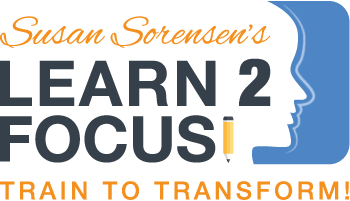Autism & the Brain: Why Rhythm and Timing Are So Important
/Autism Spectrum Disorder (ASD), according to the American Psychiatric Association, is generally characterized by deficiencies in social interaction, communication, and a tendency toward “restricted repetitive and stereotyped patterns of behaviors, interests, and activities.” Traditional research and treatments have focused on those areas. However, there appears to be more to the autistic person’s story.Recent advancements in research have led to a focus on sensorimotor functioning and regulation. It is clear that autism detrimentally affects key areas of the brain that control motor capabilities, planning, and sequencing.These deficiencies impact a host of motor skills, including fine and gross motor capabilities, and mobility. Cognitive functions affected include organizational skills and language capacity. Other challenges are: auditory, visual, and other sensory- related issues, a strong need for sameness, limited or very specific interests, and anxiety.Basically, people with autism are experiencing a “misassociation” of information. Current science points to a disconnect between the left and right brain hemispheres.Normally the logical, or left brain, is geared toward meaning and verbal expression, processing input in sequential, linear ways. It plans ahead and relies on recollection of information, directness, and punctuality.The global, or right brain, is artistic by nature. Perspective is based on response to emotion and tone of voice, and is generally impulsive. Processing in this area is random, varied, and indirect. Punctuality and the concept of time are not concrete.
The autistic disconnect between the two brain hemispheres means people with ASD have difficulty accessing information due to faulty or nonexistent brain pathways. The bridge between the left and right brain is either very weak or unstable, or completely washed out.
Autism interrupts the way a person perceives the world in their bodies, movements, and experiences.
When the hemispheres of the brain are not communicating well, the nervous system is disturbed and unreliable. The movement and perception necessary to understand the world correctly are negatively impacted.
In essence, autism challenges effective regulation of the sensorimotor system.
An autistic child is unable to adapt and appropriately respond to what is happening in and around him or her.
Is it any wonder that rhythm and timing are “off?” These processing troubles create difficulty in adjusting to the daily rhythms of life, as they happen in a timely fashion.
It simply takes too much time to understand, and respond to emotional and verbal cues, making interaction overwhelming.
Which is exactly why recent research regarding these rhythm and timing issues is so productive. It works from the top, rather than from the behavioral and social symptoms backward.
Researchers have linked stimulation of the auditory system to motor system improvement. Exterior auditory cues help regulate motor skills and cognitive capability in autistic children.
An article published in the 2013 spring journal of “Frontiers in Integrative Neuroscience” advocated the use of rhythm and timing-based treatments in their research “Rhythm, movement, and autism: using rhythmic rehabilitation research as a model for autism.”
The article indicates that a variety of studies during the last decade reveal significant improvement in neurologically-damaged people when provided musical elements like tempo and rhythm therapeutically.
By using an exterior rhythm source, like a metronome, the communication between the left and right brain hemispheres is supported audibly, visually, and through movement. “Whole brain” thinking is better achieved.
This effective autism treatment assists the brain’s ability to generate new neural pathways by way of rhythm-based, repetitious brain “rewiring”.
These treatments use focus on complex motor coordination, motor planning, and “waking up” the brain so that information is better organized.
Autistic children are now having success developing mental attention, the ability to anticipate and plan, and improved internal timing and response.

